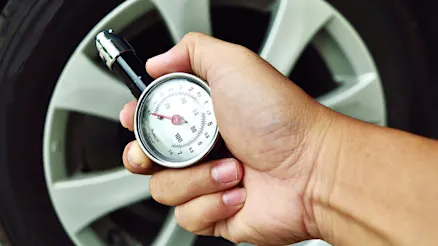
Why does my car behave differently when I start it in the morning?
Ever notice your car feels different in the morning? Learn why cold starts affect performance and how to keep your car running smoothly year-round.


Ever notice your car feels different in the morning? Learn why cold starts affect performance and how to keep your car running smoothly year-round.

Regularly checking your tyre pressure is crucial to your vehicle’s safety, fuel economy and optimal driving.

Looking for the perfect gift for the car enthusiast in your life? Carma’s experts have you covered.
What’s the true cost of owning a car? Our cars give us freedom, adventure and space to keep our spare shoes - but of course there are outgoings to keep that auto on the road. From cleaning to servicing, and other costs that follow on after the big purchase, here’s how much you could expect to pay over the lifetime of your car.
First up, let’s look at the initial costs to get those car keys in hand.
Of course, this figure can really vary depending on the car’s make, model, age and condition. It can pay to look for lower mileage and a car that’s been well-maintained, as this can help to reduce your ongoing costs over time. Depreciation is also something to consider here, as some cars maintain their value better than others.
If you’re using car finance to pay for some or all of your car, don’t forget to factor in the interest you’ll pay with your repayments. Getting multiple quotes can help you compare fees and rates.
Every state and territory in Australia applies government charges differently, and these can also vary depending on the car you buy.
Generally speaking, government charges can include:
Stamp duty is a one-off tax on the transfer of ownership of a car, whether the car is new or used. The way stamp duty is calculated changes from state to state, so it helps to gauge what this might be before you buy. Using the NSW calculator, for example, we see the motor vehicle duty would be $600 on a $20,000 passenger car purchase.
If you’re transferring a registered vehicle into your name, you’ll need to pay a one-off transfer fee to move the existing registration over. At the time of writing this is under $40 in NSW – but you can check this on the Service NSW page.
You may also need to pay a plate transfer fee, which can vary depending on whether the plates are standard, custom or personalised. Keep in mind that personalised and custom plates can incur an annual fee, so if these are transferred to you with the vehicle this is another ongoing cost to consider.
Vehicle registration can be one of the bigger costs of car ownership each year.
If the car is already registered when you buy it, there will be some registration (rego) remaining that’ll be transferred to you with the car. From then on, you’ll be sent renewal notices for your car rego. In NSW the cost of registration will typically consist of a registration fee, number plate fee, vehicle tax (based on the car’s weight) and an inspection fee.
There are several areas of car insurance to consider when looking at a car’s lifetime costs:
Listed in usual order of cost, these can include:
Cost-wide, these policies can range from several hundreds per year into thousands, so it can pay to do your research. If you're keen to shop around, you can find great options through our partnership with Compare the Market.
Compulsory Third Party (CTP) insurance, also known in NSW as a green slip, covers the cost of compensation if someone driving your car injures someone in an accident.
In NSW vehicle owners need to buy their CTP cover from one of several insurers before registering their vehicle. So some CTP insurance will be transferred to you when you buy a registered vehicle, but your green slip will be an ongoing cost to factor in.
Roadside assistance can often cost under a couple of hundred dollars per year, but could save you some major headaches if your car breaks down unexpectedly.
Of course there are various costs involved in keeping your car running (literally) like a well-oiled machine. Data from the Australian Automobile Association or AAA shows that servicing and tyres set the average car owner back around $1,870 per year.

This is probably one of the most obvious costs each week. This cost is hard to pin down because it fluctuates depending on whether you commute, how far you tend to drive, and the price of fuel. However, AAA data shows a national average of $5,129 in 2024.
And if you drive on toll roads, this is another cost to add to the spreadsheet.
Cleaning is a minor cost but it can still add up over the course of a year: particularly if you invest in professional detailing or fully automated car washes. At the lower end of the scale there’s the good ol’ fashioned sponge and bucket at home. So this category can really range from a few dollars, to thousands per year.
Phew! Naturally the total cost will be different for everyone, but we can look at averages. The annual cost could range to anywhere from $10,000 for a light car to $22,000 and above per year - so multiply that by the years you own your car for its cost over time.
In a 2023 survey by RAC, some of the most economical cars in their respective categories include the Kia Picanto, Toyota Corolla Ascent Sport, Toyota Camry and Kia Carnival. You may also be able to reduce running costs with electric or hybrid vehicles. Either way, it pays to run the numbers when making your choice. The difference could be in the thousands!
If you’d like a hand finding an economical car for your next purchase, try our handy CarMatch tool today.